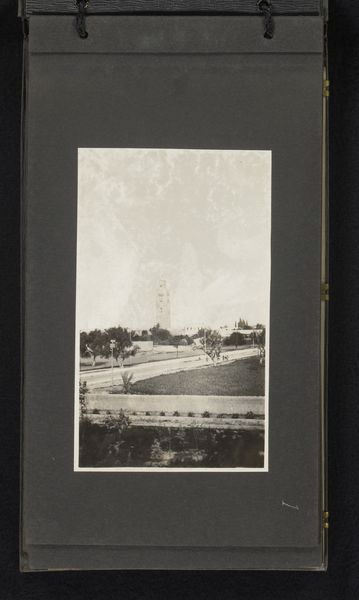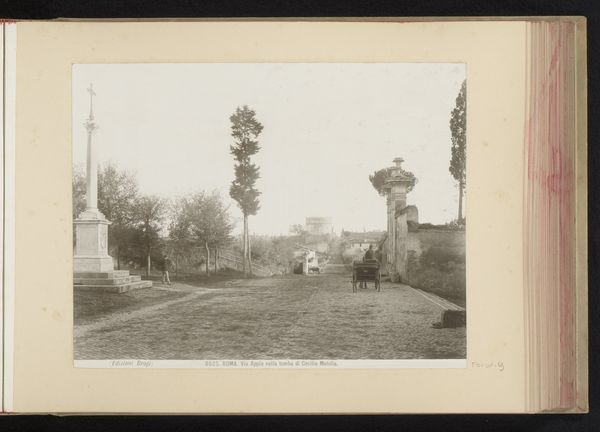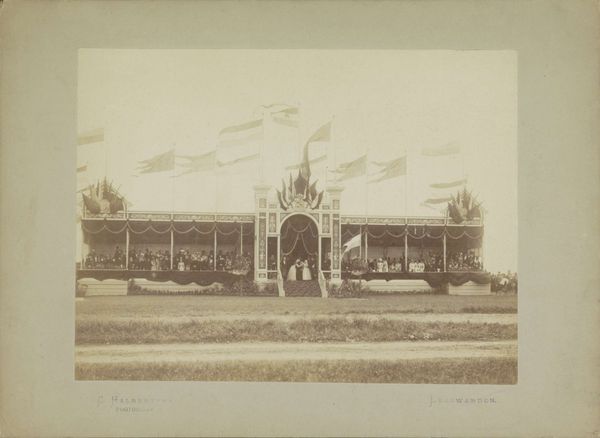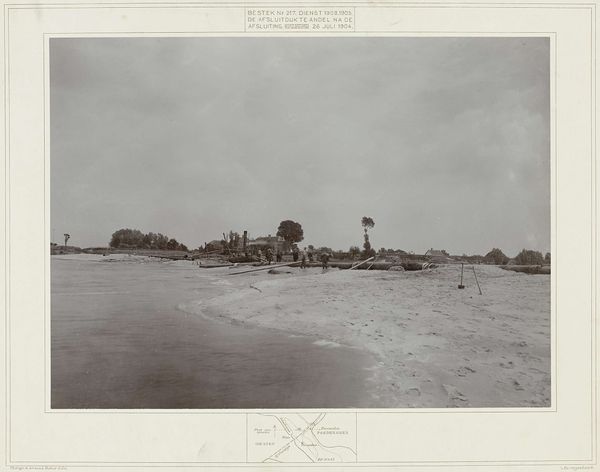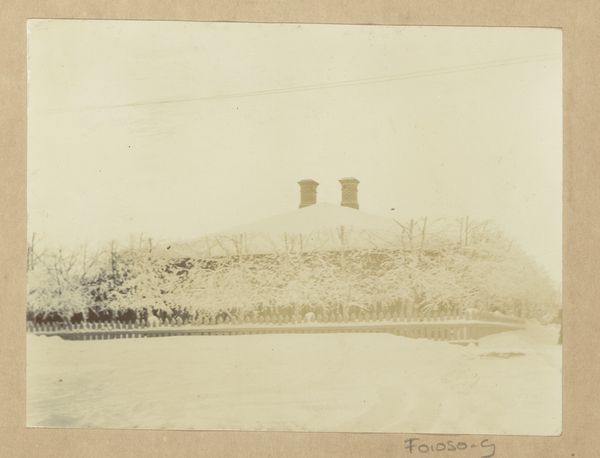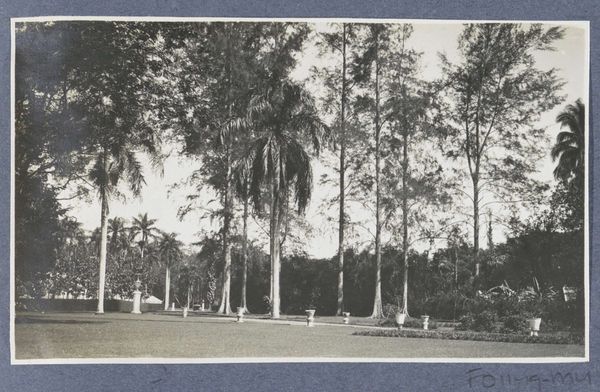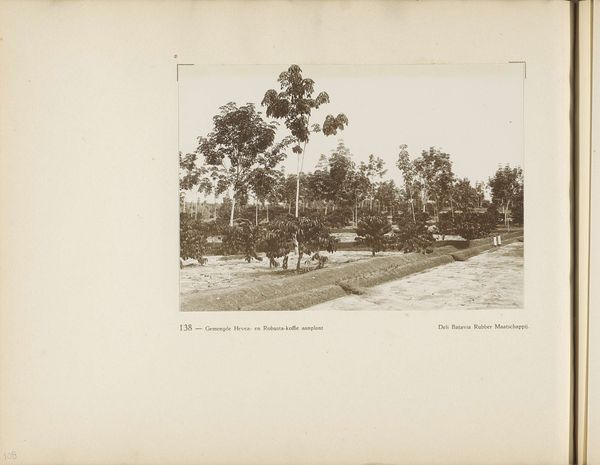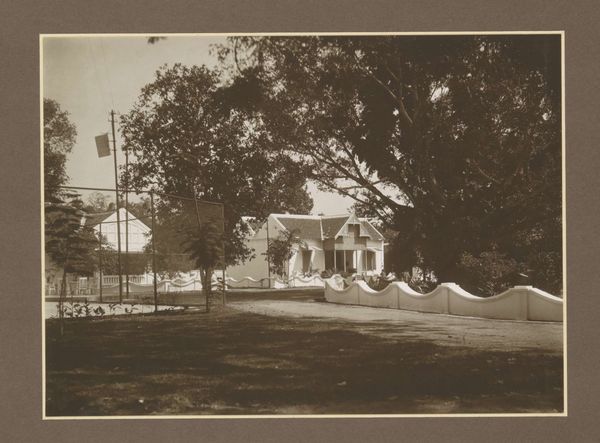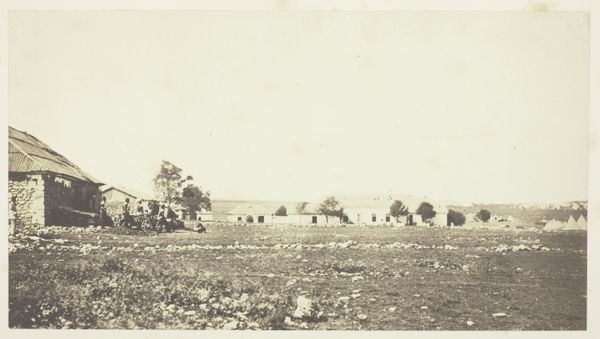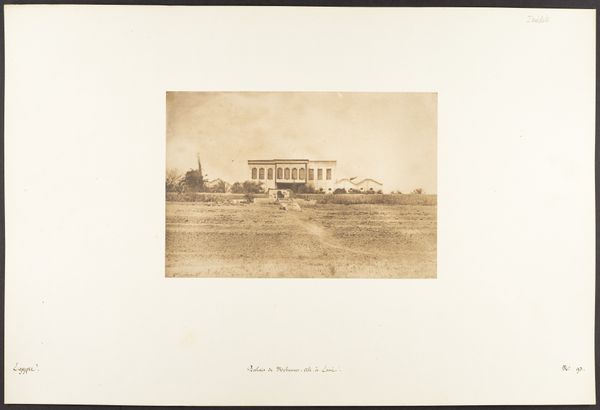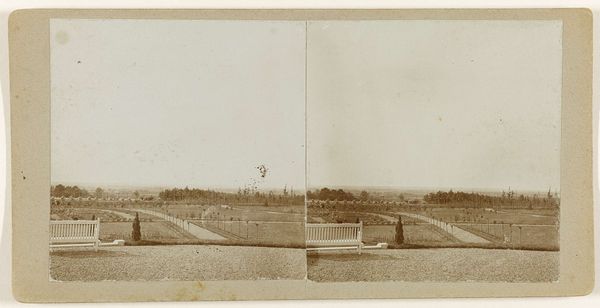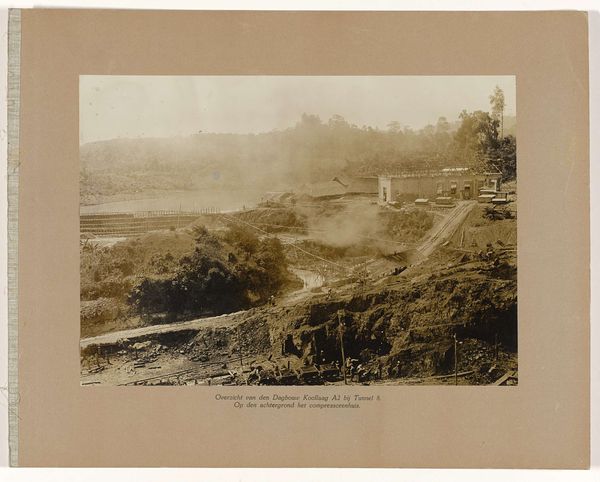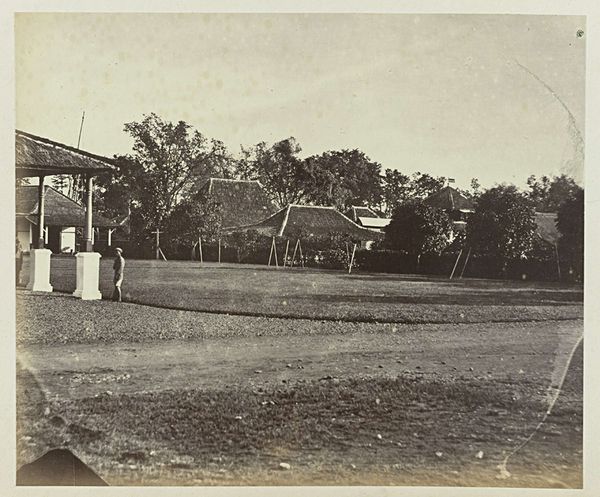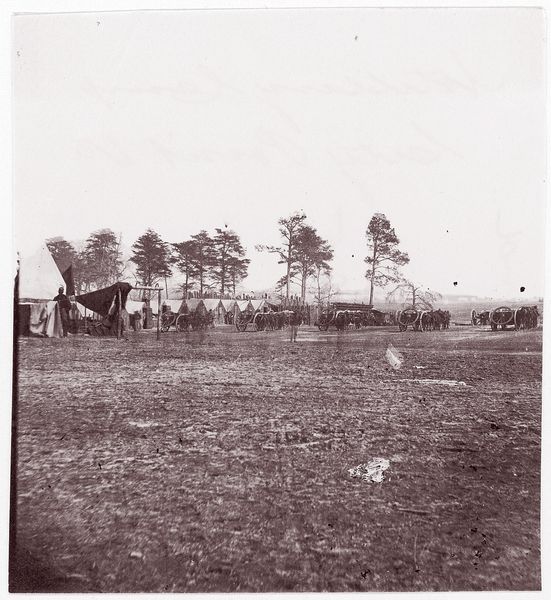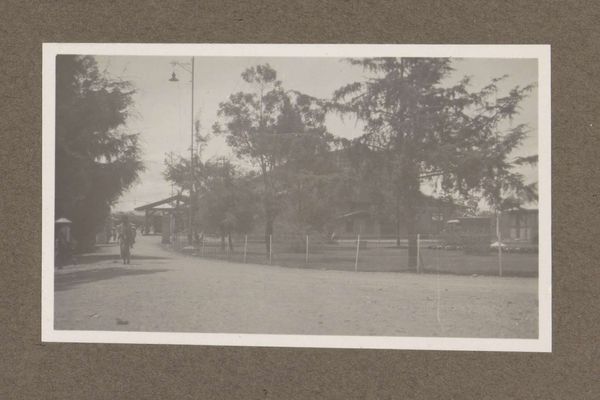
print, photography
# print
#
landscape
#
photography
#
history-painting
Dimensions: height 48 cm, width 65 cm
Copyright: Rijks Museum: Open Domain
Curator: The sepia tones in this vintage photograph really set a somber tone, don't you think? There's something about the soft focus and muted palette that feels like a faded memory. Editor: Indeed. It depicts, it seems, a stone monument outdoors, perhaps commemorating a significant event. The metadata associated with this print tells us it is called “Bestek nr. 217, dienst 1903, 1905," a landscape photograph created by Arnaud Pistoor & Zoon possibly between 1904 and 1917. Curator: The choice of imagery is interesting. Why a monument? What meaning might this memorial hold for those in power, for public memory and socio-political ideology at that specific historical moment? Editor: That’s what strikes me too. It feels staged for posterity. The stone seems adorned with symbolic figures, perhaps maritime symbols like mermaids. Flowers placed deliberately... and those tall, perhaps hastily installed flag poles looming above. They contribute to an overwhelming sense of respect. The photograph feels consciously built to reflect something grand. Curator: Given its period and the style, I imagine it serves as a celebration of perhaps engineering accomplishment, like waterway construction, or even military triumph. The print surely represents the intersection of public works, visual propaganda, and early photographic documentation. Editor: Yes. One notices the monument and is made aware, quite forcibly, that we're not just observing stone but cultural significance as well. The flags act to glorify something connected with the place that may have passed from direct view but still retains symbolic strength for the nation or for individuals who witnessed it originally. Curator: How curious. It's quite interesting how something created to memorialize history now becomes an artifact from which one can re-examine that very same past, decades or centuries later. The object is imbued with the politics of its imagery—then *and* now. Editor: Yes, and analyzing the recurring motifs through time might just reveal profound cultural continuity. A work like this becomes not just an endpoint but a fresh doorway into visual traditions.
Comments
No comments
Be the first to comment and join the conversation on the ultimate creative platform.
